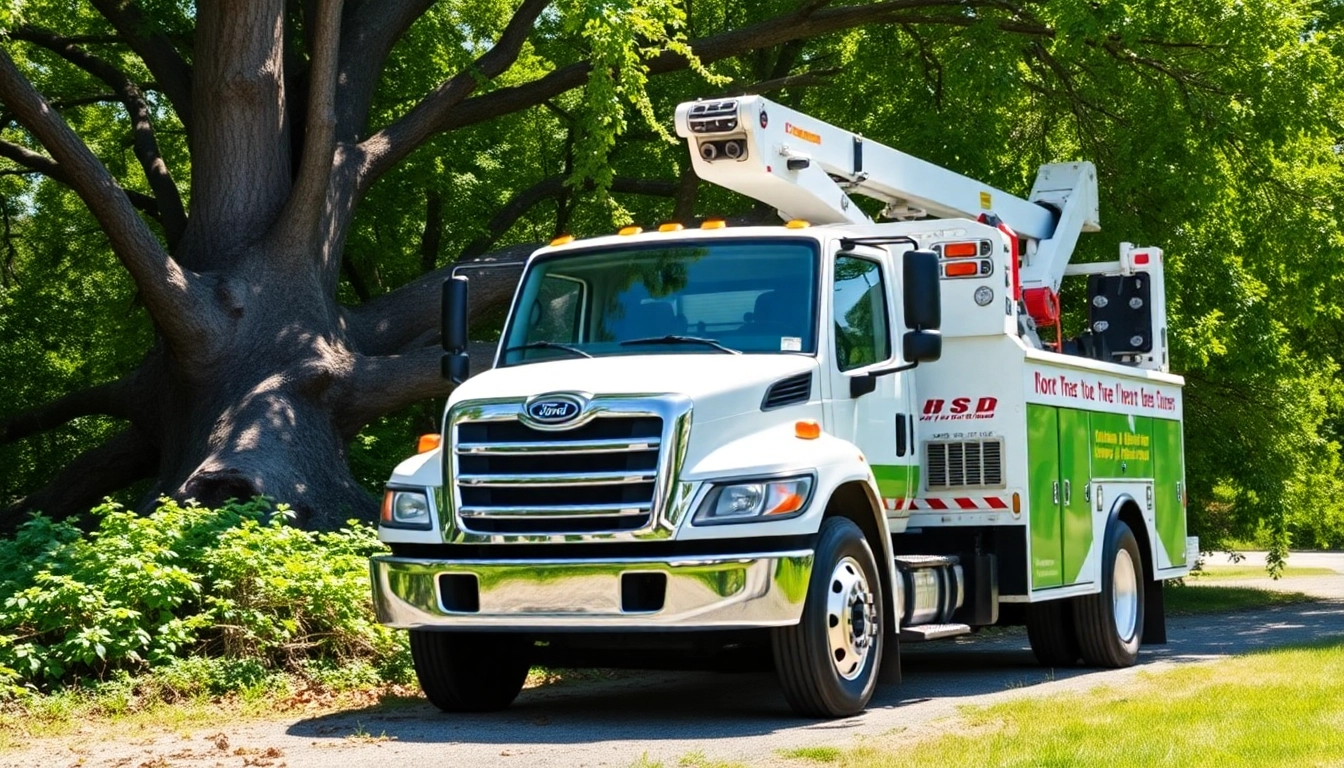Understanding Emergency Tree Services
Emergency tree services are a crucial aspect of property maintenance, especially for homeowners with trees in their vicinity. When trees become a risk due to weather conditions, infestations, or disease, prompt action is necessary to ensure safety and preserve property integrity. Understanding what constitutes an emergency in the context of trees is vital for homeowners to make informed decisions during critical situations.
What Constitutes an Emergency?
An emergency tree situation arises when trees pose an immediate threat to life, property, or public safety. Factors that contribute to such emergencies include:
- Storm Damage: Heavy winds, thunderstorms, or snowstorms can cause trees to break or fall dangerously close to structures, power lines, or roadways.
- Diseased Trees: Trees infested with pests or suffering from diseases can become unstable and may suddenly fall, necessitating immediate removal.
- Structural Instability: Trees with significant lean or visible root damage might collapse unexpectedly, requiring urgent assessment and removal.
Common Scenarios Requiring Emergency Tree Service
Several scenarios may call for emergency tree services, including:
- Fallen Trees: Instances where trees fall on homes, vehicles, or fences.
- Hanging Limbs: Limbs that are partially broken but not fully detached pose a risk and may fall at any moment.
- Blocked Access: Trees falling on driveways or roads can obstruct access to emergency services and should be promptly addressed.
Importance of Quick Response in Emergencies
In emergencies, every second counts. Quick response helps prevent further property damage, potential injuries, and liabilities. For instance, a tree that is leaning precariously can often be removed before it causes harm. Therefore, contacting a professional for emergency tree service is essential.
Choosing the Right Emergency Tree Service
Selecting a reliable emergency tree service is critical during stressful situations. Homeowners must consider various factors to ensure they hire a competent professional.
Key Qualities to Look For
When evaluating tree service providers, consider the following qualities:
- Certification and Licensing: Ensure that the company is certified and licensed to perform tree work in your area.
- Insurance: A reputable service should have liability insurance to protect property owners from responsibility in case of accidents.
- Experience: Look for companies with a proven track record in handling emergency situations, as their experience can ensure safer and more efficient operations.
Comparing Local Emergency Tree Service Providers
Start by gathering a list of local emergency tree service providers. Check their services, response times, and pricing structures. It’s beneficial to compare how quickly different companies can respond to emergencies, especially during storm seasons when many trees may be at risk.
Reading Reviews and Testimonials
Online reviews and testimonials are invaluable when selecting a tree service. Platforms such as Google, Yelp, or Angie’s List can provide insights into customer satisfaction and the professionalism of the service. Look for providers with consistently positive feedback and prompt response times, as these reflect their commitment to quality and reliability.
Preparation for Tree Emergencies
Being proactive can help homeowners mitigate the risks associated with tree emergencies. Proper preparation can make all the difference during a crisis.
How to Identify Risky Trees in Your Yard
Identifying potentially dangerous trees is an essential skill for any homeowner. Key indicators include:
- Visible Damage: Look for cracks in the trunk, broken branches, or dead sections.
- Root Problems: Exposed or decayed roots can indicate structural instability.
- Leaning Trees: Observe if any trees are leaning significantly; this can suggest that the tree may not be stable.
Regular Maintenance Tips to Prevent Emergencies
Routine maintenance plays a critical role in preventing tree emergencies. Consider these proactive measures:
- Pruning and Trimming: Regularly trim overgrown branches to prevent them from becoming hazards during storms.
- Health Assessments: Schedule periodic inspections with a certified arborist who can evaluate the health of your trees and recommend necessary actions.
- Proper Watering: Ensure trees are adequately watered, especially during dry spells, to promote healthy growth and stability.
When to Schedule Inspections with an Expert
It’s advisable to have trees inspected at least once a year or after severe weather events. Additionally, if you notice any rapid changes in a tree’s condition, such as unexpected leaf drop or rapid decay, consult an expert immediately.
The Emergency Tree Service Process
Understanding the steps involved in emergency tree services can give homeowners peace of mind during stressful situations.
Initial Assessment and Safety Measures
After contacting an emergency tree service, the first step is an on-site assessment. Professionals will evaluate the situation and determine the best course of action. Their safety protocols will include:
- Minimizing hazards to themselves and bystanders.
- Securing the area to prevent injuries.
- Using appropriate personal protective equipment (PPE).
Tree Removal Techniques and Equipment Used
Techniques for tree removal may vary based on the situation and size of the tree. Common methods include:
- Whole Tree Removal: Utilizing chainsaws and cranes to remove the tree in its entirety.
- Sectional Removal: Dismantling the tree piece by piece, especially if it poses a risk to nearby structures.
- Stump Grinding: After the tree’s removal, stumps may be ground down below surface level to avoid hazards.
Post-Disaster Clean-Up and Restoration Steps
Once the emergency tree service has completed the removal, the next steps involve cleanup and potential restoration:
- Debris Removal: Professionals will clear away branches, trunks, and other debris.
- Land Restoration: This may involve filling holes left by tree roots and preparing the area for new landscaping or planting.
- Assessment for Further Damage: Inspecting the site for any underlying issues or potential dangers that may need attention.
Cost Factors for Emergency Tree Services
The cost of emergency tree services can vary widely based on several factors. Understanding these variables can help you prepare and budget accordingly.
Understanding Pricing Structure
Emergency tree services commonly operate on a pricing structure that includes:
- Labor Costs: Charges based on the amount of time it takes to complete the job, including the team size and expertise required.
- Equipment Rental: Costs associated with the machinery necessary for the work, such as cranes and chippers.
- Permitting Fees: Local regulations may require permits for certain types of tree removal, impacting overall costs.
Insurance and Financial Considerations
Homeowners should check their insurance policies to determine coverage for tree removal and potential damage caused by fallen trees. Many policies include coverage for tree damage caused by storms, but specifics can vary widely.
Tips to Minimize Emergency Tree Service Costs
While some emergency situations are unavoidable, following these tips can help reduce costs:
- Invest in Preventative Care: Regular maintenance can prevent emergency situations that lead to costly removals.
- Shop Around: Obtain quotes from multiple service providers to ensure competitive pricing.
- Ask About Discounts: Some companies may offer discounts for members of community organizations or seniors.















Leave a Reply